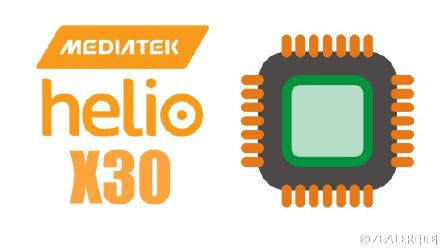Mediatek introduced Helio X20 last year with a tri-cluster architecture comprised of 2 powerful ARM Cortex A72 cores, 4 Cortex A53 cores, and 4 extra Cortex A53 cores operating at a lower frequency, and optimized for power consumption. But now that ARM has introduced ultra-low power Cortex A35 cores, and more powerful Cortex A73 cores, the Taiwanese company has been able to improve its tri-cluster implementation for the upcoming Helio X30 deca-core processor with 2 Cortex A73 cores @ up to 2.8 GHz, 4 Cortex A53 cores @ up to 2.2 GHz, and 4 Cortex A35 cores @ up to 2.0 GHz.
 According to various sources on Weibo, the mobile processor also includes an Imagination PowerVR 7XT GPU, supports up to 8GB LPDDR4 RAM @ 1600 MHz (PoP – Package in Package), UFS 2.1 flash storage, up to 40MP camera sensors, and its cellular modem will support LTE Cat.10 to Cat.12.
According to various sources on Weibo, the mobile processor also includes an Imagination PowerVR 7XT GPU, supports up to 8GB LPDDR4 RAM @ 1600 MHz (PoP – Package in Package), UFS 2.1 flash storage, up to 40MP camera sensors, and its cellular modem will support LTE Cat.10 to Cat.12.
Medaitek Helio X30 processor will be mass-produced using a 10nm manufacturing process in Q1 2017 and beyond, with Helio X30 smartphones likely launched at about the same time or in Q2 2017.

Jean-Luc started CNX Software in 2010 as a part-time endeavor, before quitting his job as a software engineering manager, and starting to write daily news, and reviews full time later in 2011.
Support CNX Software! Donate via cryptocurrencies, become a Patron on Patreon, or purchase goods on Amazon or Aliexpress




